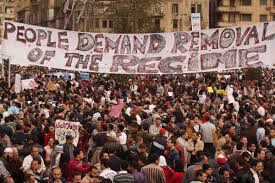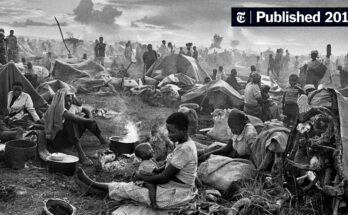Introduction
Arab spring revolution is a region that suddenly erupting into protests, demanding sweeping political changes, and challenging decades-old regimes. This was the Arab Spring, a series of uprisings that spread like wildfire across the Arab world starting in 2010. Sparked by a single act of desperation, it unleashed a torrent of activism, hope, and, unfortunately, conflict. This article delves into the origins, key events, and lasting impacts of the Arab Spring, exploring its successes, failures, and the enduring questions it leaves behind.
The Spark That Ignited a Revolution

The Catalyst: Mohamed Bouazizi
In December 2010, Mohamed Bouazizi, a Tunisian street vendor, set himself on fire in protest against police corruption and ill-treatment. His tragic act of self-immolation became the catalyst for widespread demonstrations, not just in Tunisia, but across the Arab world. Bouazizi’s plight resonated with many who faced similar oppression and economic hardship.
The Role of Social Media
In an unprecedented manner, social media platforms like Facebook, Twitter, and YouTube played a crucial role in spreading the revolution. Videos of protests and police brutality went viral, mobilizing people and garnering international attention. This digital connectivity allowed for rapid dissemination of information, coordinating protests and unifying diverse groups under common causes.
Tunisia: The Birthplace of the Arab Spring
Jasmine Revolution
Tunisia, often referred to as the birthplace of the Arab Spring, witnessed the Jasmine Revolution. Mass protests led to the ousting of President Zine El Abidine Ben Ali after 23 years in power. This movement paved the way for democratic reforms and set a precedent for other countries in the region.
Democratic Transition
Tunisia’s transition to democracy, while fraught with challenges, is considered one of the few success stories of the Arab Spring. The country adopted a new constitution and held free and fair elections, providing a beacon of hope for democratic governance in the Arab world.
Egypt: From Tahrir Square to Political Turmoil
The Fall of Mubarak
Inspired by Tunisia, Egyptians gathered in Tahrir Square, demanding the end of Hosni Mubarak’s 30-year rule. After 18 days of relentless protests and violent clashes with security forces, Mubarak resigned, leaving behind a power vacuum.
The Rise and Fall of Morsi
The initial euphoria of Mubarak’s fall quickly gave way to political instability. Mohamed Morsi, the first democratically elected president, faced significant opposition and was eventually overthrown by the military. Egypt’s journey post-Arab Spring has been marred by political turbulence and authoritarian resurgence.
also Read Adam and Eve: Choices and Consequences in the Garden of Eden
Libya: Civil War and Foreign Intervention
The Revolt Against Gaddafi
In Libya, the Arab Spring led to a full-scale civil war. Protests against Muammar Gaddafi’s 42-year regime quickly escalated into armed conflict. NATO intervened, providing support to rebel forces, which eventually led to Gaddafi’s capture and execution.
The Aftermath: Chaos and Division
Post-Gaddafi, Libya descended into chaos, with various factions vying for power. The country remains deeply divided, with ongoing conflicts between rival governments and militias, highlighting the complex aftermath of revolutionary change.
Also Read The Shocking Truth About Police Brutality: Systemic Racism and Impunity
Syria: A Tragic Descent into Civil War

The Outbreak of Conflict
Syria’s uprising began with peaceful protests against President Bashar al-Assad’s regime. However, the government’s brutal crackdown led to a protracted and devastating civil war. The conflict drew in multiple foreign powers, exacerbating the violence and human suffering.
Humanitarian Crisis
The Syrian civil war resulted in one of the worst humanitarian crises of the 21st century, with millions displaced and countless lives lost. The war’s complexity, involving multiple factions and international interventions, underscores the severe consequences of failed governance and deep-seated societal divisions.
Yemen: Political Instability and Humanitarian Catastrophe
The Houthi Rebellion
Yemen’s version of the Arab Spring saw protests leading to the resignation of President Ali Abdullah Saleh. However, the power struggle continued, leading to the Houthi rebellion and intervention by a Saudi-led coalition. Yemen is now facing a dire humanitarian crisis, exacerbated by ongoing conflict and famine.
International Response
The international community’s response to Yemen’s crisis has been mixed, with efforts to broker peace often falling short. Humanitarian aid is crucial, but political solutions remain elusive, as the conflict continues to devastate the population.
Also Read Delectable Delights from the Bible: A Culinary Journey Through Ancient Times
Bahrain: Suppressed Uprising
Protests for Reform
In Bahrain, the Arab Spring inspired protests primarily led by the Shia majority, demanding political reform and greater rights from the Sunni-led monarchy. The government, with support from neighboring Gulf states, violently suppressed the demonstrations.
Sectarian Tensions
Bahrain’s suppressed uprising highlighted the deep sectarian divide within the country. The government’s heavy-handed response and lack of meaningful reform have left underlying tensions unresolved, contributing to ongoing instability.
The Role of Women in the Arab Spring
Women on the Frontlines
Women played a significant role in the Arab Spring, participating actively in protests and advocating for political and social change. Their involvement challenged traditional gender roles and highlighted the need for gender equality.
The Struggle for Women’s Rights
Despite their crucial contributions, women’s rights remain a contentious issue in many post-Arab Spring societies. While some progress has been made, women continue to face significant barriers to full participation in political and economic life.
The Economic Dimensions of the Arab Spring
Unemployment and Inequality
Economic factors such as high unemployment, especially among youth, and widespread inequality were major drivers of the Arab Spring. Protesters demanded economic opportunities, fair wages, and an end to corruption.
Economic Challenges Post-Revolution
Post-revolution, many countries have struggled to address these economic challenges. Political instability, conflict, and governance issues have often hindered economic recovery and development.
The International Community’s Response
Diplomatic Efforts
The international community’s response to the Arab Spring varied, with some countries supporting democratic movements while others prioritized stability. Diplomatic efforts often focused on mediation and conflict resolution, though with mixed results.
Military Interventions
In some cases, such as Libya and Syria, foreign military interventions played a significant role. These interventions have had complex and often controversial outcomes, influencing the course of the conflicts and their resolutions.
The Media’s Role in the Arab Spring
Traditional vs. Social Media
The Arab Spring highlighted the evolving role of media in shaping public discourse and mobilizing action. While traditional media provided coverage, social media played a transformative role in organizing protests and disseminating information.
Censorship and Propaganda
Governments responded with censorship and propaganda, attempting to control the narrative and suppress dissent. The battle for information became a crucial aspect of the broader struggle for power and control.
The Legacy of the Arab Spring
Mixed Outcomes
The Arab Spring’s legacy is complex and multifaceted. While it succeeded in toppling long-standing dictators, it also led to unforeseen challenges, including civil wars, political instability, and humanitarian crises. The outcomes have been mixed, with some countries making strides towards democracy, while others have regressed into authoritarianism or chaos.
Lessons Learned
The Arab Spring offers important lessons about the complexities of revolutionary change. It underscores the importance of effective governance, the need for inclusive political processes, and the dangers of neglecting economic and social issues.
The Future of the Arab Spring
Ongoing Struggles
Many of the issues that sparked the Arab Spring remain unresolved, including corruption, economic hardship, and political repression. The continued struggle for democracy and human rights in the Arab world suggests that the spirit of the Arab Spring is far from extinguished.
Potential for Renewal
There is potential for renewal and progress, driven by a new generation of activists and reformers. The Arab world’s future depends on addressing the root causes of discontent and fostering inclusive, resilient societies.
Conclusion
The Arab Spring was a watershed moment in modern history, revealing both the power of collective action and the complexities of revolutionary change. While its immediate outcomes were mixed, the Arab Spring’s long-term impact continues to shape the political and social landscapes of the Arab world. The quest for democracy, justice, and human rights remains ongoing, driven by the enduring spirit of those who dared to challenge the status quo.
FAQs
1. What triggered the Arab Spring?
The Arab Spring was triggered by Mohamed Bouazizi’s self-immolation in Tunisia, which sparked widespread protests against corruption, economic hardship, and political repression.
2. How did social media influence the Arab Spring?
Social media played a crucial role in the Arab Spring by enabling rapid dissemination of information, organizing protests, and garnering international attention for the movements.
3. What were the main outcomes of the Arab Spring?
The Arab Spring led to the overthrow of several long-standing dictators, but also resulted in civil wars, political instability, and ongoing conflicts in some countries.
4. How did women participate in the Arab Spring?
Women actively participated in the Arab Spring protests, advocating for political and social change and challenging traditional gender roles.
5. What are the lasting impacts of the Arab Spring?
The Arab Spring’s lasting impacts include ongoing struggles for democracy, human rights, and economic development in the Arab world, with both successes and setbacks in different countries.
Meta Description
AIDS epidemic retrospective: Explore the history, activism, and medical breakthroughs that shaped the fight against HIV/AIDS and its impact on communities.


